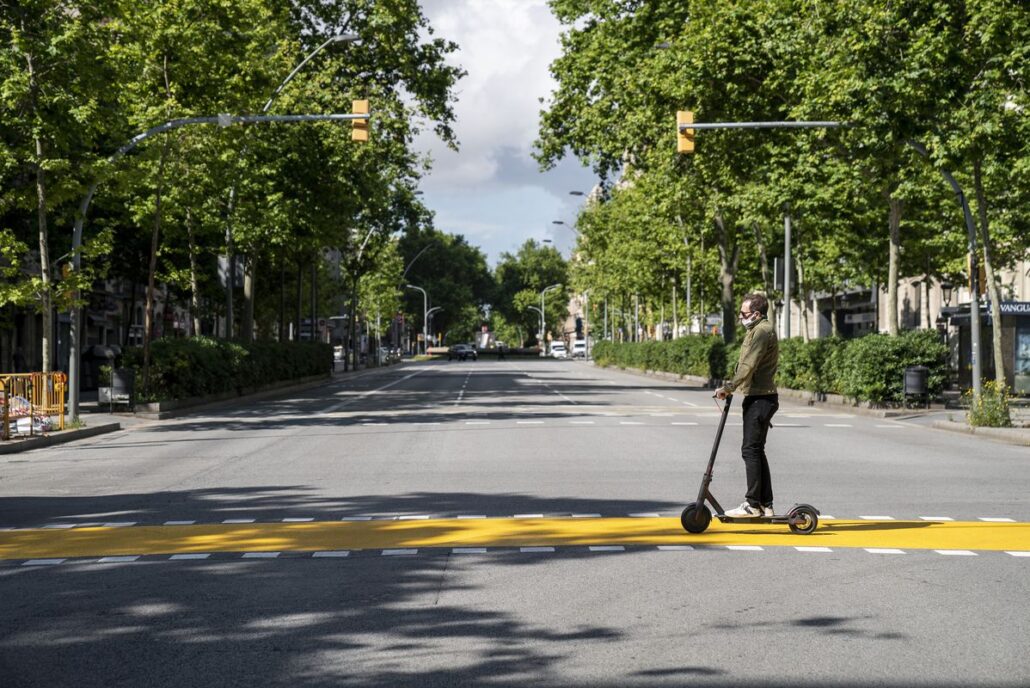Barcelona is in full revolution and no, it’s not about the crowded Ramblas or tourists taking pictures at the Sagrada Familia. This time, the focus is on the streets and those who travel them. The city has taken a bold step towards modernizing its traffic regulations, and this is generating as much debate as the tapas in a bar on Las Ramblas.
 A new code for new times
A new code for new times
Since last month, Barcelona has implemented significant changes in its traffic regulations. This measure seeks to adapt to the demands of an ever-evolving city that aspires to be safer and more sustainable. These changes reflect a concerted effort to improve coexistence between cars, bicycles, scooters and pedestrians.
Badajoz street reinvents itself: greener, more sustainable and with better mobility
The first thing that stands out is the mandatory helmet requirement for users of personal mobility vehicles (PMVs), such as the popular electric scooters. This measure has been adopted not only as a safety issue, but also as a response to the increasing accident rates related to these vehicles. Proponents of helmets argue that it is a minimum precaution to avoid major consequences in the event of an accident.
Scooters and bicycles: towards a peaceful coexistence?
The proliferation of electric scooters on the streets of Barcelona has been exponential. However, with this growth have also come concerns about safety and shared use of public roads. The new regulation aims to regulate their use, limiting speed and clearly defining the areas where they can circulate.
With more green axes and pedestrian streets, BCN transforms to a sustainable mobility model
The issue of bicycles has not been left behind. Authorities have tightened guidelines for cyclists, encouraging specific routes that prioritize their safety and that of pedestrians. Everything points to a more harmonious coexistence, although it remains to be seen whether users will embrace these changes with the same enthusiasm with which they embraced the freedom to move around without restrictions.
Practical consequences of the regulation
With the implementation of these new rules, penalties have also been a topic of conversation. Fines are designed to deter reckless behavior. While some critics have called these measures excessive, most agree that it is a necessary sacrifice to ensure the common good. The vision of a more sustainable city continues to invigorate these measures. By encouraging the use of bicycles and scooters, Barcelona is taking a firm step toward reduced air pollution and smoother traffic flow. These changes not only improve the quality of urban life, but also position the city as a benchmark for mobility policies in Europe.
The challenge of implementing change in a legendary city
Barcelonans have an emotional connection with their city. Any modification in its structure or regulations generates passionate reactions. Resistance to change is natural, especially in a city with so much history and tradition. However, time will show whether these measures will be embraced by the population or whether it will face challenges similar to those experienced by other European metropolises.
Mobility and gender in Barcelona: analysis of commuting patterns.
Educational initiatives that accompany these changes will be crucial. Involving the community through awareness campaigns and workshops can facilitate the adaptation process. At the end of the day, the success of these measures depends on the cooperation and commitment of all stakeholders.
Future of mobility in Barcelona
The question on everyone’s mind is: what’s next? Barcelona seems to be laying the groundwork for a mobility model that other cities could adopt. As technology advances and cities face the challenges of climate change, measures such as those adopted by Barcelona become not only desirable, but necessary. Technology is no stranger to this transformation. From apps that guide users along safe routes to monitoring systems that collect data for better traffic management, innovation is key to bringing the dream of an efficient and safe city to reality. Barcelona has planted the seed for a new era of mobility. It remains to be seen how this scenario will develop in the coming years. The city is on the move, and the people of Barcelona are ready to be part of this evolution, while, as always, maintaining their unique and indomitable spirit.


 A new code for new times
A new code for new times
